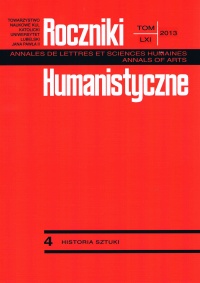Trickster - definicje, stan badań. Rekonesans
Abstrakt
A trickster, or a deceiver, a cheat, a smart fool, and at the same time a personification of all carnal impulses, is typical of any corner of the world. Heteromorphic, hiding under the figures of people, spirits, magic creatures and animals, he is also not devoid of divine features. His nature is never cognized till the end, and a trickster keeps evolving, revealing ever new faces. He introduces conflict, chaos and destruction, and at the same time he teaches people tricks, gives them a spark of divine fire, helps to cognize and organize the world, and fans the flames of passion. He is a figure known first of all in anthropology, important for interpreting and understanding numerous myths. It is ever more often that his features may be also found in the attitudes of contemporary artists, film heroes and icons of pop-culture. So a trickster may become the key to understanding contemporary culture, including many works of modern art – often controversial, breaking the taboo, eagerly using irony, provocation and immoderation.
In the present article the author describes this unusual figure. She mentions various attempts at defining this extremely important cultural archetype, briefly presenting the most important publications devoted to it. Using chosen examples she discusses the presentations of the figure of the trickster in traditional narrations, that is in myths, folklore and folk traditions. She shows how universal he is and emphasizes these features and roles owing to which the trickster assumes the proportions of an icon of our times and becomes an alluring model to be imitated for artists who incessantly, albeit not always consciously, use him in their works.
Copyright (c) 2013 Roczniki Humanistyczne

Utwór dostępny jest na licencji Creative Commons Uznanie autorstwa – Użycie niekomercyjne – Bez utworów zależnych 4.0 Międzynarodowe.





